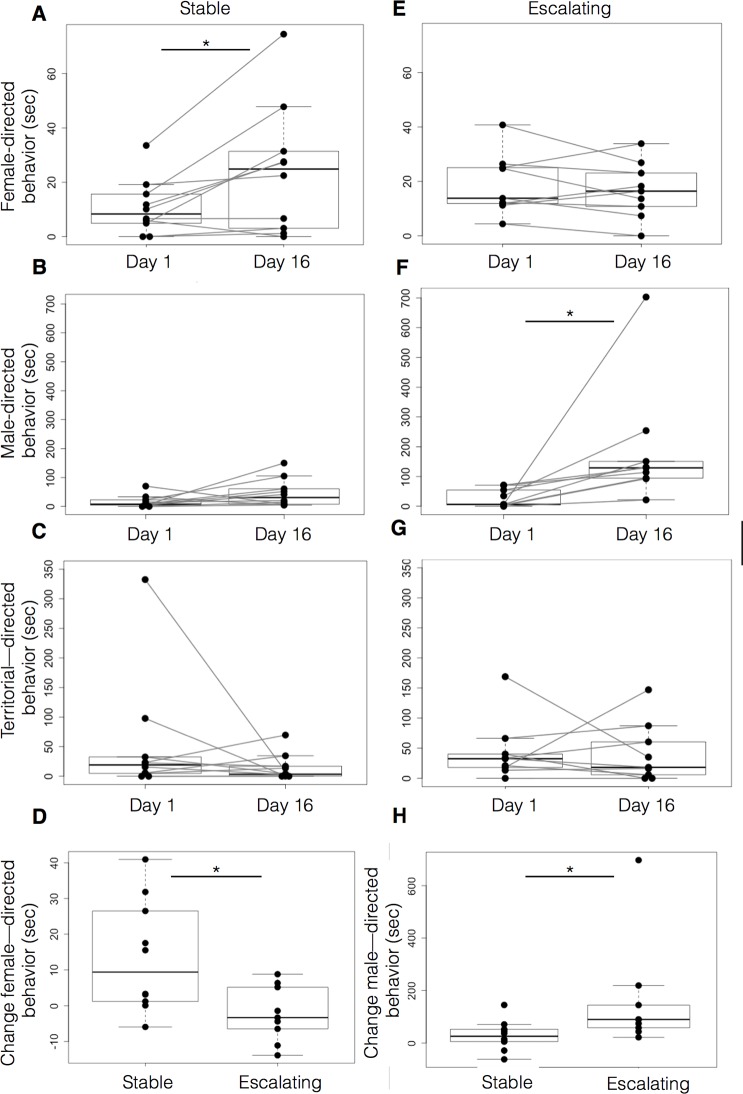Fig. 6.
Behavioral differences across social contexts between stable and escalating dominant males. The behavior quantified for 15 min on Day 2 and Day 16 shows differences in behavior between dominant males. On Day 2 the dominant male, clearly identified in each dyad, directed its behavior towards females, opponent or territory. We compared the female- and male-directed behaviors of each dominant fish on Day 2 with the same behaviors on Day 16. When faced with an intruder, the stable subtype showed greater female-directed behaviors on Day 16 (C). In contrast, the escalating subtype performed more male-directed behaviors (E). We compared the relative magnitude of behavioral changes, expressed as the difference in seconds of total duration of behaviors, from Day 2 to Day 16 for the male types. There was no difference in non-social territorial behaviors. Differences in both female-directed behaviors of stable males, and male-directed in escalating males were significant (D,H). Behaviors are expressed as time spent (s) engaged in either male- or female-directed behaviors. Data are plotted as mean time spent (s). Top and bottom of boxes represent the first and third quartiles, respectively; whiskers extend to the most extreme data points no more than 1.5 times the interquartile range from the box; and horizontal lines within the boxes represent group medians. Asterisks indicate a statistically significant difference (*P<0.05, Mann–Whitney).

